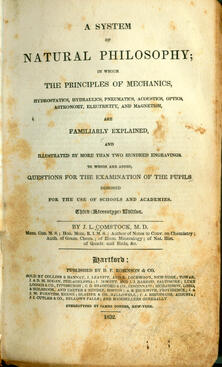Before taking to the skies, a pilot learns the inner workings of an airplane. Rare book collectors should do the same with books. It's important to understand how a book is put together so it is easier to recognize the signs of fine craftsmanship, to spot reproductions, and to assess the value of potential additions to your collection. Here are the basics of book assembly.
Modern Book Construction 101

Sewing the pages together creates the strongest binding, but this method is also more expensive. With this method, multiple gatherings (called signatures) are sewn through the folds of the pages. Books bound this way usually open very well. Oversewing may also be done for certain types of books and books that have a library binding.
On the other hand, if adhesive is used, it is applied directly to the pages, on the side where the binding will be placed. This is called the text block. Adhesive may be applied while the text block is closed, or while the pages are fanned out. If a book's text block or signatures/sections have become loose in its binding, this is described as shaken. In other words, the text block is no longer tightly bound but it has not yet come detached.
To hold the book to the spine and cover, books have joints and hinges. A joint attaches the spine to the cover on the exterior of the book. A hinge attaches the pages to the inside of the cover. Note that paperback books don't need hinges or joints because the paper cover is attached directly to the pages.
Book Handling
New or Used: A Glossary of Book Condition Terms
 As Issued - A term used to describe an aspect of the book that might be perceived as a flaw but was the original state of the book when published.
As Issued - A term used to describe an aspect of the book that might be perceived as a flaw but was the original state of the book when published.
Association Copy - Book that in and of itself is of no particular interest except that it was owned by someone important or famous.
Bowed – A condition where the boards of a hardcover book have turned either inwards or outwards in relation to the leaves. This often occurs because of a rapid change in moisture.
Chipped – Used to describe a binding or dust jacket which is missing small pieces along its edges. This should be distinguished from ripped, torn, or intentionally clipped binding edges.
Ex-Library – A book that was once part of an institutional or public library’s collection but has been deaccessioned. Ex-library copies often bear the marks of the library, such as stamps, seals, call numbers, or the increasingly outdated (but memorable) pocket for a check-out card. Collectors should be aware that “ex libris” does not indicate an ex-library copy.
Foxing - A descriptive term for scattered spots on paper which are commonly reddish-brown in color. The term is derived from the rusty red color of Reynard the fox. Foxing is created by a particular chemical reaction and must be distinguished from the discoloration that can occur from surface colonies of mold growth.
Ghosting, Shadowing, or Offsetting – A description used for uneven fading on paper. Ghosting is often caused by prolonged contact with other paper materials, such as a bookmark, or old adhesives which have triggered a chemical reaction.
 Inscribed - A short note with personalized dedication, written by the author or a previous owner, usually in the beginning of a book, generally accompanied by a signature.
Inscribed - A short note with personalized dedication, written by the author or a previous owner, usually in the beginning of a book, generally accompanied by a signature.
Shaken – Used to describe a book whose pages have become loose in their binding; no longer tight, but not detached.
Sunning – Materials which are faded from direct and prolonged exposure to sunlight. Light can cause a chemical breakdown in printed ink, but also in cloth and leather bindings. A book’s spine will sometimes show the worst sunning from facing outward on a shelf.









